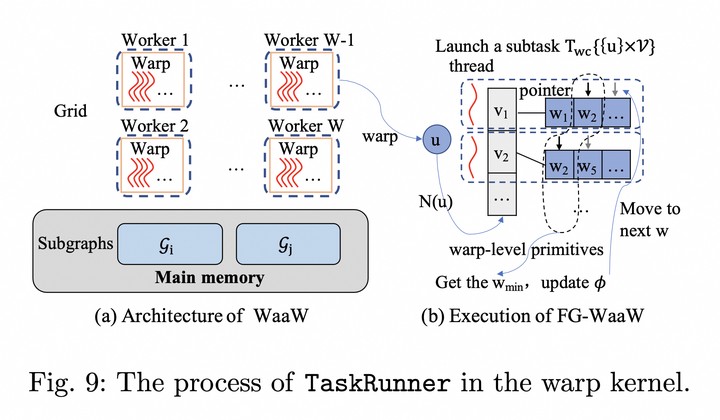Abstract
Butterfly (a cyclic graph motif) counting is a fundamental task with many applications in graph analysis, which aims at computing the number of butterflies in a large graph. With the rapid growth of graph data, it is more and more challenging to do butterfly counting due to the super-linear time complexity and large memory consumption. In this paper, we study I/O-efficient algorithms for doing butterfly counting on hierarchical memory. Existing algorithms of this kind cannot guarantee I/O optimality. Observing that in order to count butterflies, it suffices to ``witness” a subgraph instead of the whole structure, a new class of algorithms called Semi-Witnessing algorithm is proposed. We prove that a Semi-Witnessing algorithm is not restricted by the lower bound of a witnessing algorithm, and give a new bound of . Subsequently, we develop the IOBufs algorithm that manages to approach the I/O lower bound, and thus claim its optimality. Finally, we investigate the parallelization of IOBufs to improve its performance and scalability. To support various hardware configurations, we introduce a general parallel framework, PIOBufs. Our analysis indicates that the key to implementing PIOBufs on multi-core CPUs lies in the fine-grained task division. Furthermore, we extend the CPU-tailored PIOBufs to harness the extensive parallelism that GPUs provide. Our experimental results show that IOBufs performs better than established algorithms such as EMRC, BFC-EM and G-BFC. Thanks to its I/O-efficient design, IOBufs can handle large graphs that exceed the main memory capacity on both CPUs and GPUs. A significant result is that IOBufs can manage butterfly counting on the Clueweb graph, which has 37 billion edges and quintillions () of butterflies.
Publication
VLDB Journal (Extended from Sigmod 2023 paper)
